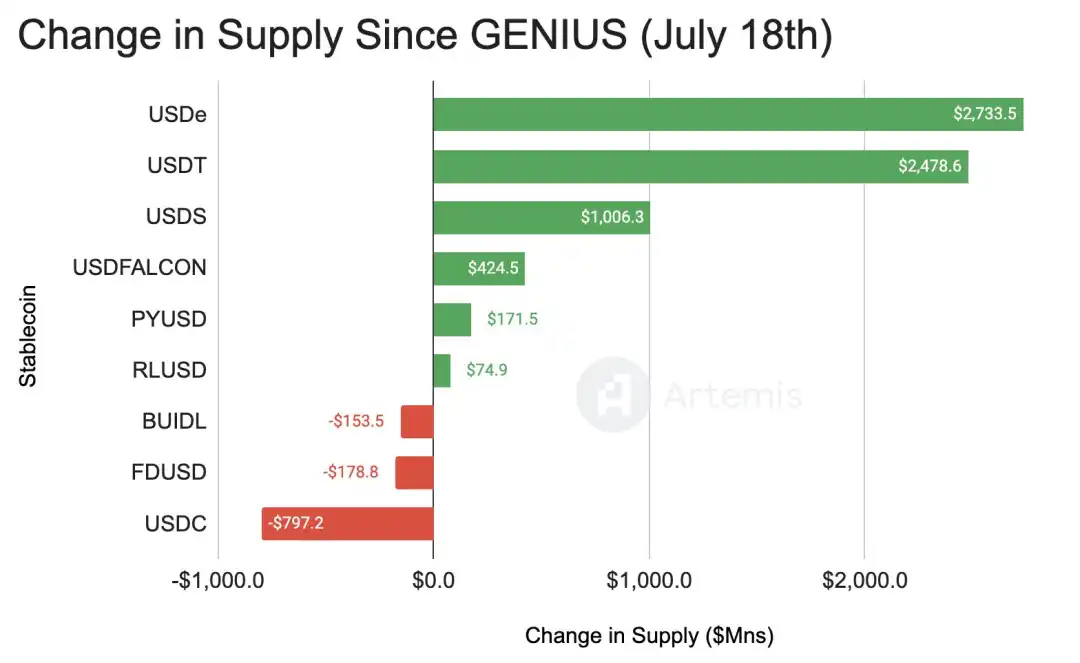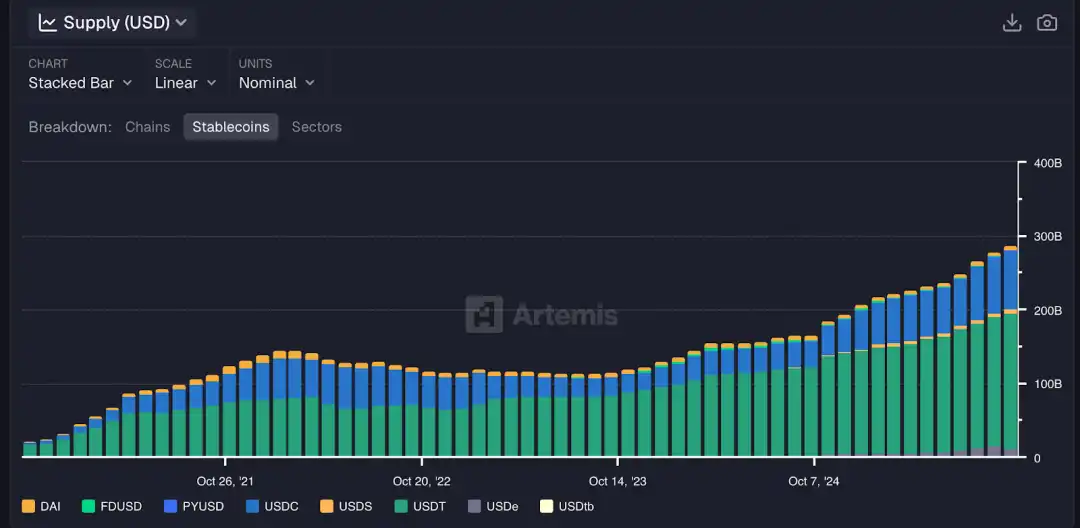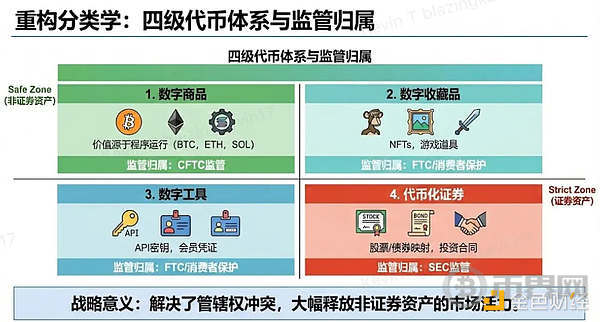$300 Billion New Frontier: The Three Pillars of the Stablecoin Ecosystem
In the investment in the emerging field of stablecoins, a balance must be found among three key dimensions: technological innovation, regulatory compliance, and market demand.
Original Article Title: "The $300 Billion New Blue Ocean: Three Main Lines of the Stablecoin Ecosystem"
Original Article Author: Louis, Biteye
Introduction: A Historical Turning Point for the Stablecoin Ecosystem
In the years 2024-2025, the global stablecoin market is undergoing an unprecedented explosive growth. As of October, the total market value of stablecoins has surpassed $300 billion, compared to $166.3 billion at the end of 2024, representing a staggering 82.9% annual growth rate. This growth not only breaks historical records but also signifies a fundamental shift of stablecoins from a fringe speculative tool to mainstream financial infrastructure.

A historic breakthrough in the regulatory environment has provided strong momentum for this growth: in July 2025, the U.S. GENIUS Act was officially signed into law, establishing the first federal-level stablecoin payment framework. Concurrently, the EU's MiCA regulation fully came into effect in December 2024, laying a solid foundation for the standardized development of the stablecoin industry.

While USDT and USDC still dominate, their market share has decreased from 91.6% to 83.6%. The stablecoin market is quietly undergoing changes, with emerging stablecoin projects rapidly rising, such as:
· Ethena's USDe reaching a market cap of $11 billion
· PayPal's PYUSD surpassing a market cap of $27.6 billion
· The RWA-backed stablecoin market reaching a scale of $35 billion, with a 46% annual growth

Stablecoin Specialized Public Chains: Infrastructure Revolution
Traditional blockchains have shown significant pain points when handling stablecoin transactions: Ethereum's high gas fees often reach tens of dollars, transaction confirmation times range from seconds to minutes; while Tron has lower fees, it faces centralization risks and technical limitations.
The new generation of specialized stablecoin public chains has achieved a qualitative breakthrough through technological innovation. These public chains generally support high throughput of 1000+ TPS, zero or very low fees, and sub-second transaction confirmations. More importantly, they have designed stablecoins as native gas tokens, completely eliminating the impact of cryptocurrency price volatility on user experience.
Plasma: Flagship Project in the Tether Ecosystem
Plasma, as a leading project in the race, has raised a total of $75.8 million, including a $20.5 million Series A funding round led by Bitfinex and Framework Ventures in February 2025, as well as participation from prominent investors such as Peter Thiel and Bybit. Following the mainnet test launch on September 25, 2025, the TVL quickly reached $5.3 billion.
Technically, Plasma adopts a custom PlasmaBFT consensus mechanism, achieving sub-second finality and a processing capacity of over 2000 TPS. Its core innovation lies in the Paymaster system, enabling feeless USDT transfers, while supporting custom gas tokens and confidential payment functionality. The project has integrated the Chainlink oracle and built a complete DeFi ecosystem by bridging with non-custodial Bitcoin through pBTC.
Stable: Institutional-Grade USDT Optimization Solution
Stable is positioned as the "real-world payment rail," focusing on institutional-grade USDT applications. The project raised $28 million in seed funding in July 2025, with joint investments from Franklin Templeton, Hack VC, PayPal Ventures, and Bitfinex. The project uses StableBFT consensus, supports 10k TPS, sub-second finality, while maintaining EVM compatibility.
The technological feature of Stable is the use of USDT as the native gas token, achieving P2P transfer with zero fees through an account abstraction. Enterprise functionalities include batch transfer aggregation, compliant private transfers, and cross-chain USDT0 support. The project has integrated PayPal's PYUSD stablecoin, focusing on developing fiat on/off ramps and debit card issuance business.
Arc: Circle's Exclusive Ecosystem
Arc, developed by Circle, is positioned as the "home of stablecoin finance," deeply integrated into the Circle ecosystem. The project uses USDC as the native gas token, ensuring a USD-denominated predictable fee structure. Technically, it adopts the Malachite BFT consensus engine, supporting 3000 TPS and sub-second finality.
Arc's uniqueness lies in its built-in FX engine, supporting quote-based stablecoin conversions and optional privacy features for compliant shielding. The project is also exploring reversible USDC transactions to address fraud issues and is partnering with the German Stock Exchange to promote adoption in the EU market.
In terms of funding scale and technological progress, Plasma has taken the lead with Tether's ecosystem support and the earliest mainnet launch. Stable has built differentiation through institutional positioning and the PayPal partnership, while Arc relies on Circle's compliance advantage and USDC ecosystem status. All three projects have adopted a BFT consensus mechanism, which is more suitable for payment scenarios compared to the traditional PoS probabilistic finality.
Interest-Bearing Stablecoins: Innovative Yield Model
Interest-bearing stablecoins embed earnings directly into the stablecoin, providing users with a yield experience surpassing traditional bank savings.
Ethena USDe
USDe's market cap surged from $86 million in January 2024 to $110.4 billion in October 2025, marking an astonishing 13,750% increase, propelling it to become the world's third-largest stablecoin.
USDe's technological innovation lies in maintaining stability through a delta-neutral strategy, pledging assets like ETH and WBTC, while opening hedge futures positions on exchanges to create a non-directional risk exposure. sUSDe offers holders an annualized yield of 2.56%-3.72%, sourced from Ethereum staking rewards, perpetual contract funding rates, and stablecoin fixed income.
Sky Ecosystem
The Sky Ecosystem (formerly MakerDAO) has reshaped the decentralized stablecoin lending market through a rebranding and product innovation. As a reward-based stablecoin, USDS has reached a market cap of 8 billion USD, providing users with a 4.75% annualized yield through the Sky Savings Rate mechanism.
The yield is sourced from protocol surplus, including lending fees and liquidation income, distributed to savings users through the SSR mechanism. The project has also introduced an Endgame plan restructured through SubDAOs, offering different services through specialized subprotocols such as Spark, Grove, and Keel.
Stablecoin Payment Infrastructure: Global Financial Reshaping
By 2025, stablecoin cross-border payment volume is projected to reach 46 trillion USD, exceeding 50% of Visa's throughput. The cost structure of traditional cross-border payments typically ranges from 2-7%, including transfer fees, exchange rate differentials, and intermediary fees, whereas stablecoins can reduce costs to 0.5-2%, saving 50-80% in high-frequency cross-border scenarios. More importantly, stablecoin settlement times have been shortened from the traditional 3-5 business days to under 3 minutes, significantly reducing the need for pre-funding and cash flow interruptions.
The Dominant Rise of BVNK
As a stablecoin infrastructure provider, BVNK experienced strong growth in its business by 2025, with an annual transaction volume exceeding 20 billion USD, primarily serving enterprise clients such as Worldpay, Flywire, and dLocal. In October 2025, Citi Ventures strategically invested in BVNK to support its global stablecoin payment track expansion. Meanwhile, Coinbase and Mastercard are in talks to acquire BVNK at a valuation of 15-25 billion USD, marking the largest stablecoin acquisition in history and highlighting its core position in enterprise-level stablecoin payments.
Stripe's Innovative Strategy
Stripe has launched a stablecoin subscription payment feature, supporting automatic USDC deductions on the Base and Polygon chains tailored to the needs of AI and SaaS companies. This feature halves settlement costs, with AI companies reporting a 20% shift in payment volume towards stablecoins. Stripe also introduced the Open Issuance platform to assist companies in issuing custom stablecoins and integrating AI-driven payment agent tools.
Stablecoin AI Integration Applications: The Future of Finance
With the rise of AI Agent Economy, traditional API key and subscription models are no longer sufficient to meet the needs of autonomous machine-to-machine transactions, leading to the development of payment protocols and infrastructure specifically optimized for AI agents.
KITE AI: Building Layer-1 for the Agent Internet
As a leading project in this field, KITE AI is dedicated to building the first Layer-1 blockchain optimized for the AI Agent Economy. KITE has completed a $18 million Series A funding round led by PayPal Ventures and General Catalyst.
The core innovation of the project lies in three key technological pillars: the Agent Identity Resolution (AIR) for encrypted agent identities, programmable permission management, and on-chain attribution through Proof of AI. AIR serves as an agent app store, addressing trust issues among AI agents, allowing developers to deploy custom agents and access the ecosystem market through a low-code interface.
Recently, KITE announced a strategic partnership with Brevis to enhance the transparency and autonomy of agent identity and payment modules using zero-knowledge proof technology. The initial modules of this collaboration have been deployed on the BNB Chain, with future expansion to the KITE L1 for cross-chain proof relay.
x402 Protocol: Redefining the HTTP Payment Standard
The x402 protocol is jointly promoted by tech giants such as Coinbase, Google, and Cloudflare. When a client (such as an AI agent or application) accesses a protected resource, the server responds with a 402 status code and JSON-formatted payment details, including amount, currency, and receiving address. The client then constructs a signed payment transaction and resends the request through an X-PAYMENT header. Third-party enablers like Coinbase validate the on-chain payment, granting resource access once verified. The entire process achieves trustless execution, settling payments on-chain for auditability.
The technical advantage of x402 lies in its native HTTP integration and minimal transaction costs. Settlements based on Base USD Coin (USDC) can be completed within 2 seconds with gas fees below $0.0001 and zero protocol fees.
Investment Outlook and Risk Assessment
The stablecoin subsector is transitioning from concept to reality and from speculation to application. Among the four major emerging tracks, dedicated stablecoin public chains demonstrate the clearest investment value. Plasma, backed by the Tether ecosystem and $53 billion TVL, validates market demand with a noticeable technological moat. With the explosion of enterprise-level payment needs, such infrastructure projects are poised to receive premium valuations. Enterprise payment solutions benefit from regulatory improvements, and the $15-25 billion acquisition valuation of BVNK reflects traditional financial giants' recognition of stablecoin infrastructure. While AI integrated applications are still in the early stages, the rapid pace of technological innovation and application scenario validation is exceeding expectations, making it suitable for investors with a higher risk appetite. The risk-reward ratio of interest-bearing stablecoins is complex, and the risk of de-pegging in extreme market conditions cannot be ignored.
Regulatory risk remains the biggest variable. While the GENIUS Act and the MiCA regulation have provided a framework for industry development, the specific implementation details and enforcement standards are still evolving, and stablecoin track projects need to continue monitoring compliance costs and policy changes. Competition risk is intensifying as traditional financial giants enter the field, and the strategic layout of companies like Stripe, Visa, and Mastercard will reshape the market landscape, requiring emerging projects to maintain a competitive edge in technological innovation and ecosystem development.
Investing in the new stablecoin track requires finding a balance among technological innovation, regulatory compliance, and market demand. With the continuous launch of key projects in 2025 and further clarification of the regulatory framework, this round of stablecoin infrastructure upgrades is expected to reshape the global payment landscape, bringing generous returns to early participants.
Disclaimer: The content of this article solely reflects the author's opinion and does not represent the platform in any capacity. This article is not intended to serve as a reference for making investment decisions.
You may also like
Trump to interview pro-crypto Christopher Waller for next Fed Chair: WSJ
Ethereum Spot ETFs Face Alarming $223.7M Exodus: 4th Day of Major Outflows
Bitcoin ETF Shock: $277.4 Million Flees US Funds as BlackRock Leads Outflow

